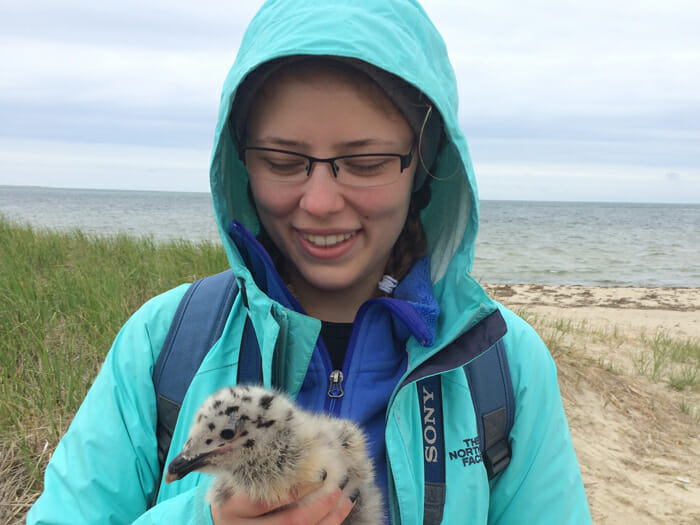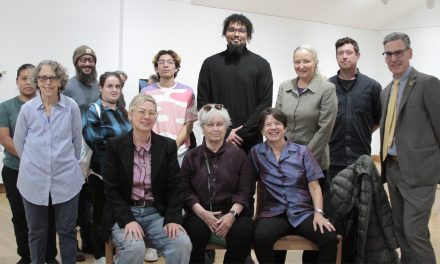Academy Award and Golden Globe winner Olympia Dukakis will perform at the College of Staten Island (CSI) on December 1 as part of a dinner theater fundraiser by The Friends of CSI in association with the CSI Parthenon Project.
Dukakis will share the Center for the Arts Williamson Theatre stage with her actor husband Louis Zorich in a brilliant reading of the eloquent and moving play, I take your hand in mine, by Carol Rocamora, based on the love letters of Russian playwright Anton Chekhov and his famous actress wife Olga Knipper.
The evening begins at 6:00pm with dinner, and the performance is followed by dessert and conversation with the actors. Event chairs are Nancy and Christopher Benbow, and Christine and Peter Cea. Tickets cost $100, and can be purchased by calling the CSI Advancement office at 718.982.2365.
“This event continues to engage the Friends as “˜ambassadors’ of CSI,” said Dr. Christine Cea, president of the Friends. “Our mission has always been to explore ways to acquaint our Staten Island community with the riches that CSI holds, and this is a perfect opportunity to do so. This event will showcase world-class talent, infuse money to the Parthenon Project, and ultimately create an enduring legacy of Hellenic culture on the Staten Island.’
The Parthenon Project includes the painstaking restoration of 12 plaster casts of the Parthenon’s western frieze and installation in the Atrium of the college’s Center for the Arts.
“One of the cornerstones of the Friends is their commitment to public higher education, and the college is a better place today because of their four decades of dedication,” said Dr. Tomá¡s D. Morales, president of CSI. “Their support of the curatorial aspects of the CSI Parthenon Project through this dinner theater event underscores their commitment to the community and in enhancing the life-enriching educational and cultural resources that CSI has to offer.”
The Friends are not the only people in support of the Parthenon Project. The Stavros Niarchos Foundation recently committed $65,000 to complete the restoration of the casts, which were made in Boston by the P.P. Caproni & Brother Company some time between 1892 and 1927, from molds that the British Museum of London took directly from the Parthenon in Athens in the 1820s. The Niarchos grant also funds permanent installation of the casts in the Atrium of CSI’s Center for the Arts.
Upon completion of the project, CSI will offer tours to school groups and to the public, providing a rare glimpse into the history of Hellenic culture, and will create a 100-foot photo atlas of the Parthenon Frieze that will include descriptive plaques and other educational materials so that the atlas can be a more effective learning tool.
The exhibit will also allow CSI to develop new course offerings, expand faculty research, and increase the CSI Library collection as it relates to Greek culture and history, added Dr. Morales.
“This project allows CSI to enhance the study of ancient Greece and classical antiquity for CSI students and school groups, as well as provide the ability to expose campus visitors to the history of Hellenic culture,” said Bob Huber, interim vice president for college advancement. “The generous grant from the prestigious Stavros Niarchos Foundation represents a new source of international support to our college, and will present Staten Islanders with a first-class artistic and educational resource.”
Other notable contributors to the Parthenon Project include the Honorable Matthew Mirones, the New York State Department of Education, the AHEPA Educational Foundation, the Staten Island AHEPA Chapter, Professor Stamos Zades, and Ms. Mary Chrampanis, Huber noted, adding that “this project is an excellent example of CSI and the community working together to benefit the Island.”
The Friends of CSI dinner theater event is offered as part of Island Culture: Near and Far, the 2007-2008 season at the Center for the Arts.
PHOTO AVAILABLE UPON REQUEST:
Conservator Karen J. Fix of Conservation Artists restores one of the CSI’s 12 casts of the Parthenon Frieze. Photo by Veronica Carle.
(Additional photos also available.)
BACKGROUND ON THE PARTHENON FRIEZE PROJECT:
Sandra Gambetti, Assistant Professor of History at CSI, has been very busy lately, not only trying to gain insight into the origins of 12 plaster casts of the Parthenon’s western frieze that now belong to the College, but, along with Craig Manister from the Department of Performing and Creative Arts, is also overseeing their restoration so that students, staff, and visitors to CSI may enjoy them, and learn from them.
Thus far, one cast has been completely restored, and another four are undergoing renovation. Gambetti reports that the casts were made in Boston by the P.P. Caproni & Brother company some time between 1892 and 1927. Although she states that it is difficult to trace the exact origins of the casts, Gambetti theorizes that they might be the result of a combination of two other molds””those recreated from original molds commissioned by Lord Elgin in 1802, which were stored at the British Museum, and another set, the so-called Merlin molds, which were created in 1872. The resulting casts corrected flaws and faults to portray a more accurate depiction of the original frieze.
Gambetti is also investigating how the Caproni factory gained access to the molds so that it could produce the casts, but presently, she notes that she
can only speculate on this because the factory’s archives were destroyed many
years ago. According to Gambetti, the British Museum’s formatore (the person
responsible for the Museum’s molds), Domenico Brucciani, whom the Museum
allowed to hold most of its molds in his place of residence, eventually started his own company. After his death in 1880, his company continued, and it is possible that the founder of the Caproni factory gained access to them as he traveled throughout Europe in search of molds for his company.
As for the more recent history of the casts, Gambetti discovered that they originally belonged to the Staten Island Academy, acquired through a private donation. The Academy displayed the casts in the main hall of the institution’s library. In the early 1970s, the Academy moved from its original location in St. George, leaving the casts in an abandoned building that was eventually scheduled for demolition. Pat Passlof and Arthur Levine, professors at (what was then) Richmond College, which was located across the street from the Academy, came to the casts’ rescue, storing them in an unused room until 1994, when they moved to the present-day CSI campus, and the Atrium of the Center for the Arts (CFA).















